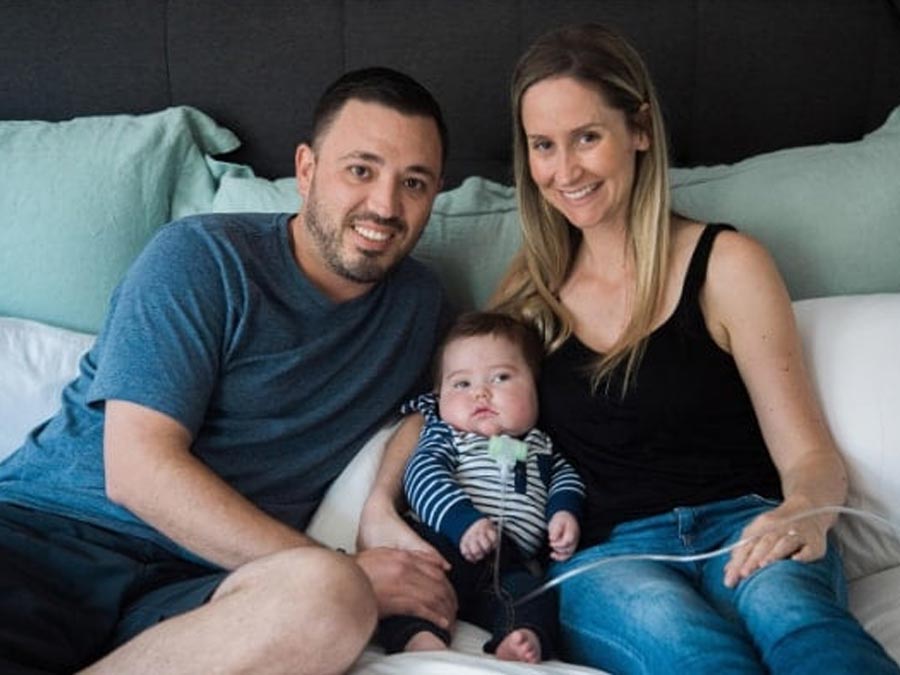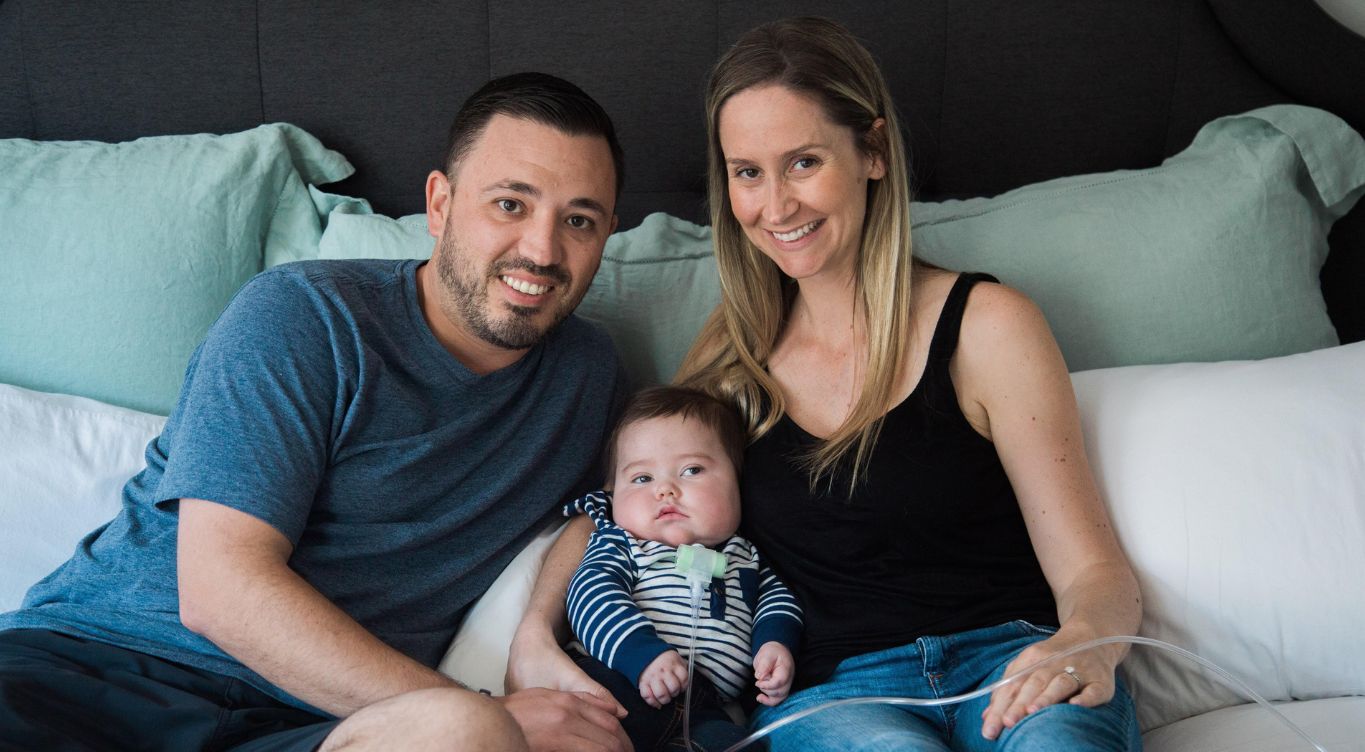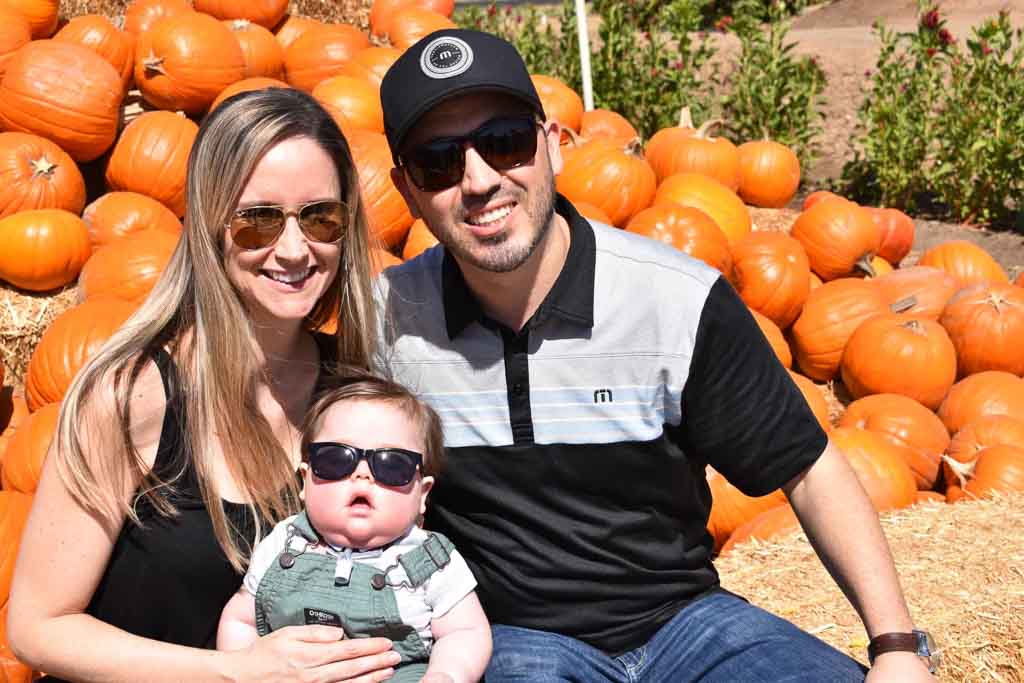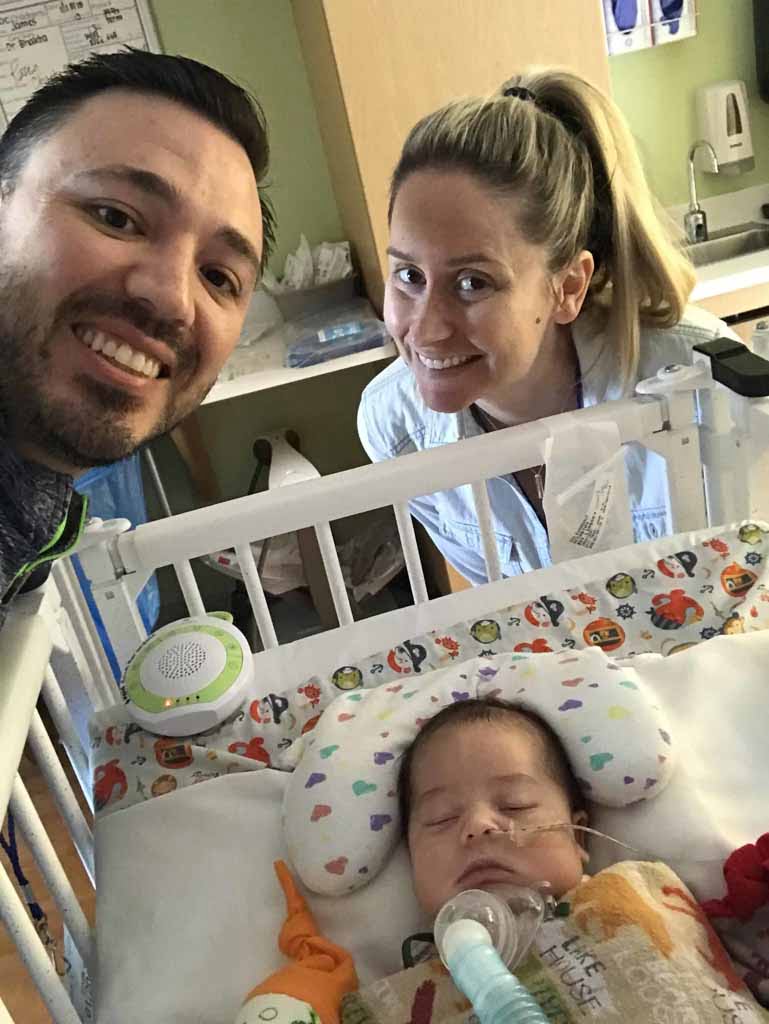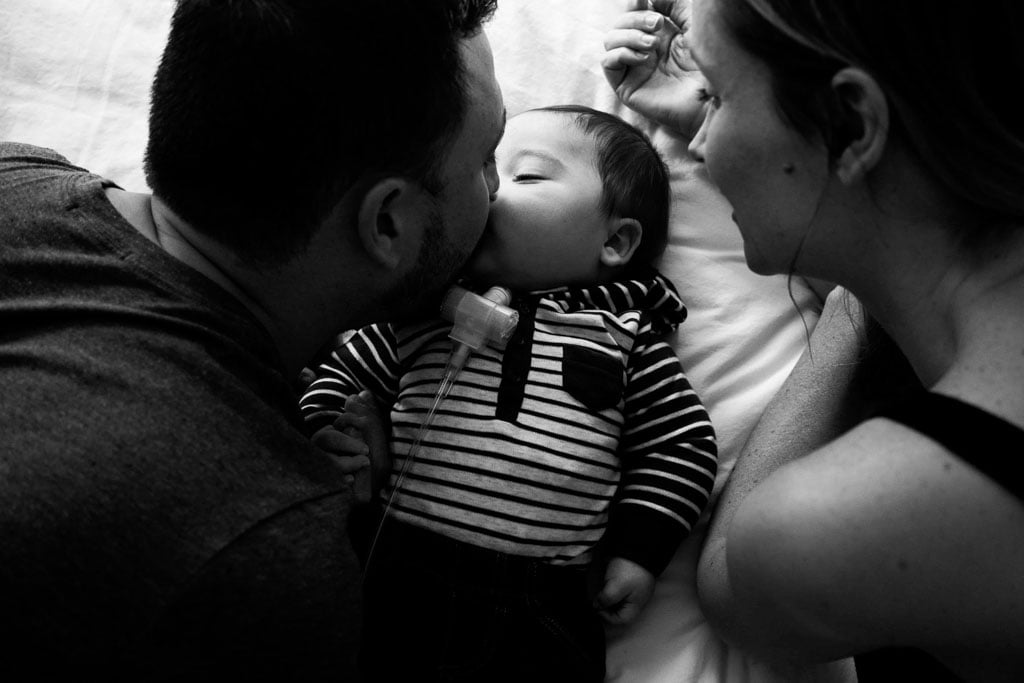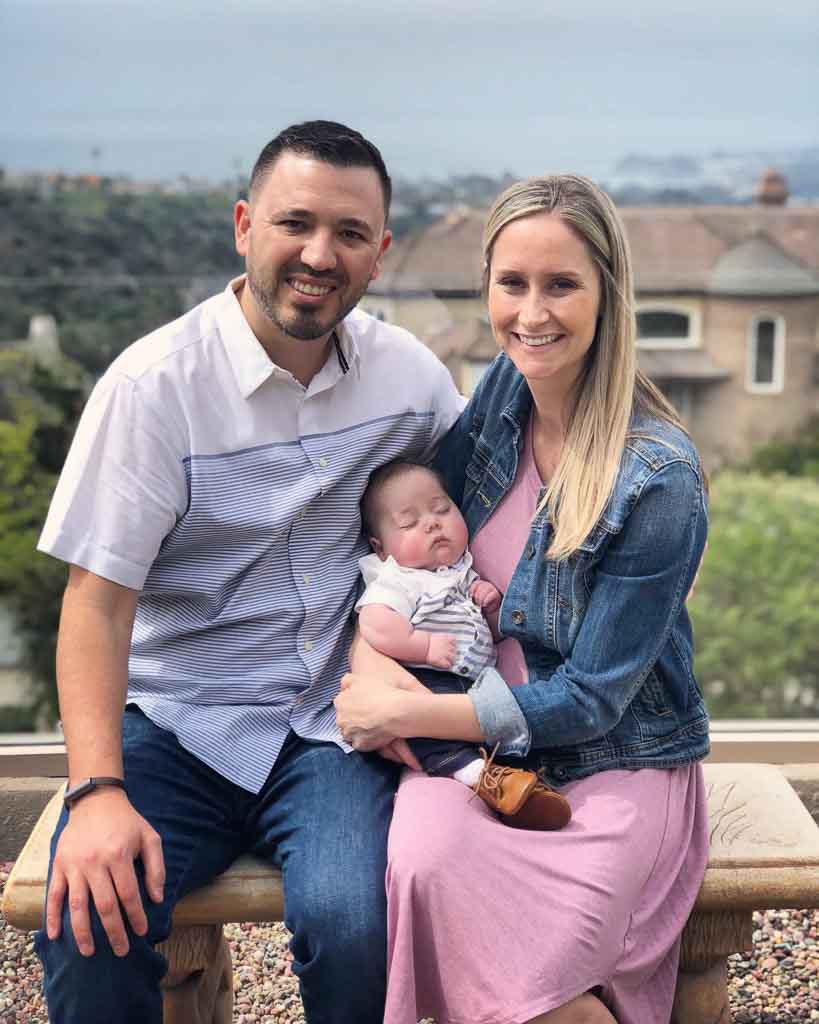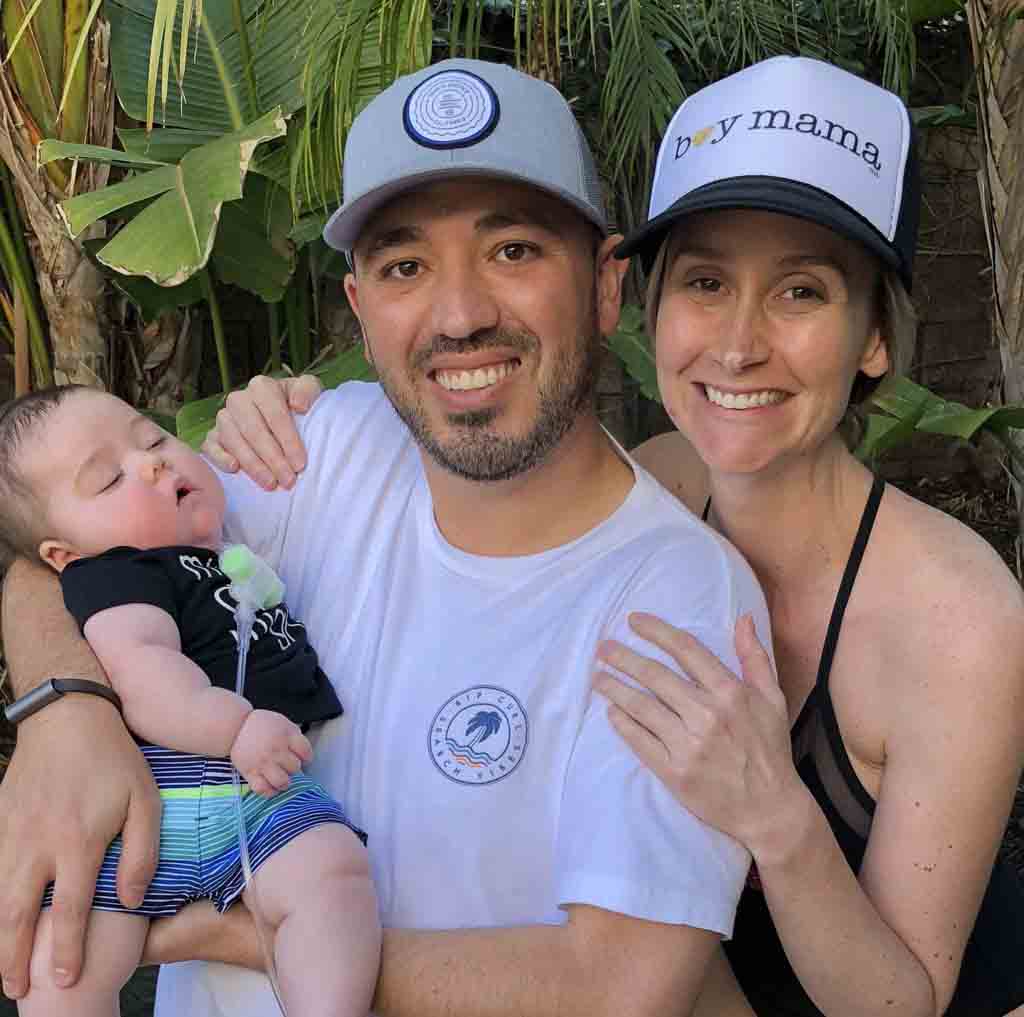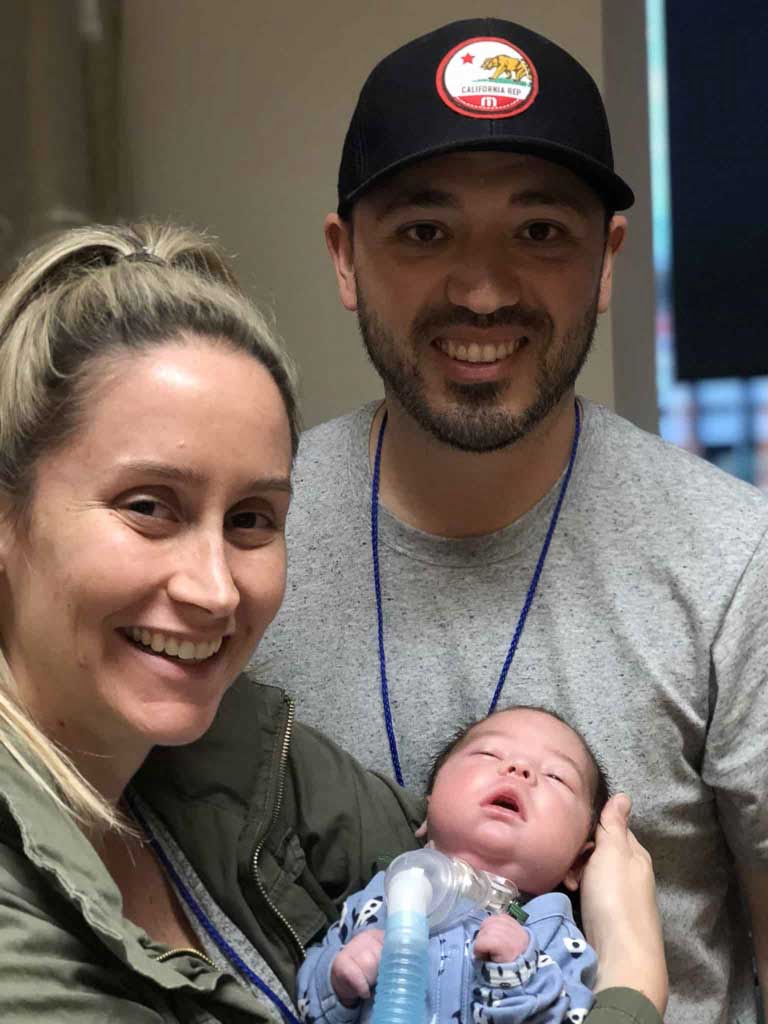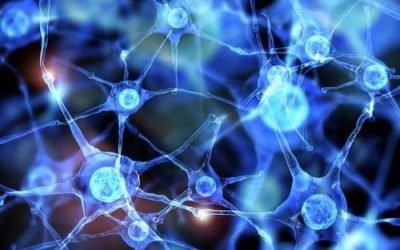We didn’t know anything was wrong until the day James was born. At 39 weeks and 2 days our precious boy was born. James was born unable to breathe and was immediately intubated. After he was stable, the NICU team at our local hospital decided it was best to send James that night to our Children’s Hospital.
We spent almost a month in the NICU there where we found out that James has bilateral vocal chord paralysis, hypotonia and is unable to suck or swallow. Because of all of this, James received his tracheostomy and gastronomy tube surgeries within the first few weeks of his life. We had every test ran, and yet the doctors still couldn’t tell us what was causing all of this and we were discharged from the hospital.
Two weeks after being discharged, we received a call from our geneticist who let us know she had found our answer. James has an extremely rare genetic mutation of the CNTNAP1 gene.
What is CNTNAP1?
Recessive mutations in CNTNAP1 that lead to a loss of this gene and its protein product CASPR lead to disruption of the myelinating cells from the signal transmitting nerve cell axons. This has profound negative effects on the development and maintenance of many nerve fibers in the central and peripheral nervous system. The effect on the peripheral nerves is a profound demyelination and weakness. This adds CNTNAP1 to the severe CMT syndromes.
This genetic disorder makes it difficult for James’ brain to communicate to his muscles and so now we understand why his body reacts the way it does. James is unable to move like a “normal” child and is unable to use his voice. There is no cure.
Since coming home from the hospital and with lots of therapy, James has learned how to swallow, move his head and his arms and legs (at times) and recently learned how to smile. We pray for a day that we can hear our sweet boy cry or laugh. We are hopeful that with consistent physical therapy and occupational therapy, James will continue to have “inch” stones that we can celebrate.
What is CNTNAP1?
Recessive mutations in CNTNAP1 that lead to a loss of this gene and its protein product CASPR lead to disruption of the myelinating cells from the signal transmitting nerve cell axons. This has profound negative effects on the development and maintenance of many nerve fibers in the central and peripheral nervous system. The effect on the peripheral nerves is a profound demyelination and weakness. This adds CNTNAP1 to the severe CMT syndromes.
This genetic disorder makes it difficult for James’ brain to communicate to his muscles and so now we understand why his body reacts the way it does. James is unable to move like a “normal” child and is unable to use his voice. There is no cure.
Since coming home from the hospital and with lots of therapy, James has learned how to swallow, move his head and his arms and legs (at times) and recently learned how to smile. We pray for a day that we can hear our sweet boy cry or laugh. We are hopeful that with consistent physical therapy and occupational therapy, James will continue to have “inch” stones that we can celebrate.
Please Donate To James’ Cure Today!
Where will your tax-deductible donation go?
Although there is no cure right now, your donation will help us to fund researchers in finding a cure for James as well as other children with James’ genetic disorder. In partnership with the HNF, we are funding gene therapy and other cutting edge research to hopefully work towards curing our son of this disorder.
Mouse Models of Human CNTNAP1 Mutations: Strategies to Rescue and Restore Functions
Research with the Department of Cellular and Integrative Physiology UT Health San Antonio, TX

